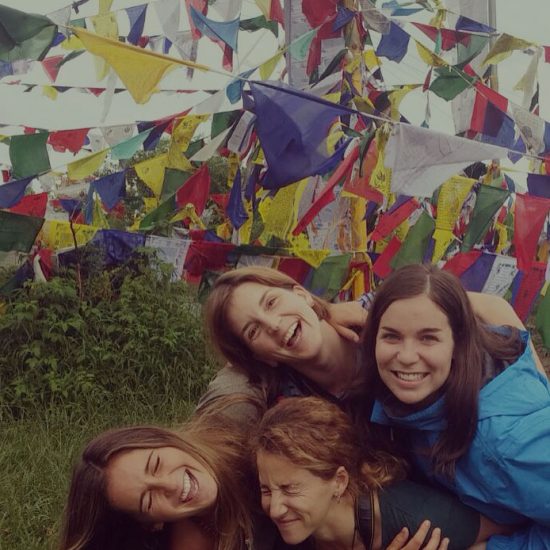Discover India
The luminous colour of saris, spices and garlands. The fresh air that fills the lungs with the purity of the Himalayas. The temples, the river Ganges and the huge, laughing eyes of the people. Chaos, surprise, spirituality, music... all this and much more is India!
Why do we like India?
Because never before has a country given us such a powerful, tender and emotional experience. And because it is so large and varied that touring it is an adventure. In the north, we find McLeod Ganj, a small Tibetan town at the foot of the Himalayas that is home to the Dalai Lama. In the east, the sacred city of Varanasi invites us to spend hours observing life at the foot of the Ganjes: women washing saris, sadhus (ascetics) meditating, cows, children playing, young people floating their candles and flowers in the river as an offering... At least once in a lifetime, you have to experience it!
What happens to Tibetan refugees in India?
In 1959, the Chinese Communist Party illegally occupied Tibet under the pretext of "ending the extreme abuse of a feudal system". The Tibetan political and spiritual leader, the Dalai Lama, had to flee to northern India, where he remains a refugee today. Behind him, thousands of Tibetans fled on foot on a perilous journey across the Himalayas. 15,000 of them already! Hunger, cold, injuries and fear, a lot of fear, accompany them until they reach McLeod Ganj. Once in India, they need help to make a fresh start.
Having suffered persecution by the Chinese government and a long and arduous journey, Tibetan refugees face several obstacles in India. First, they do not know anyone and do not know English, which can lead to isolation. Second, they have no jobs and few opportunities, as they are not fluent in the language and do not have the skills that the labour market demands. Finally, living far away from their country, they feel they lose their culture and customs.
In McLeod Ganj, Tumaini supports two projects that aim to help Tibetan refugees build a new life in India:
● The first offers adult education: language classes, CV preparation, health education, etc. It also has a program for the preservation and spreading of Tibetan culture, including music and dance exhibitions and talks on Buddhist philosophy. It has more than 200 students.
● The second is a project of empowering women through the circular economy. Products are made from recycled textile materials. It is located in McLeod and the products are then sold in a Fair Trade shop in the same town.
How do women live in India?
It is not easy to be a woman in India. According to UNICEF, there are 56% cases of early marriage in rural India and 29% in urban areas. Although dowry has been banned since 1961, the reality shows that it is still in the majority, so that women become an economic asset and are subject to the decisions of their husbands, says the Vicente Ferrer Foundation in another report. According to Amnesty International, more than 338,000 crimes against women were recorded in 2016, including 110,000 cases of violence at the hands of their husbands and family members. To these terrible situations we must add other small injustices. They often have to drop out of school, are forbidden to go out alone, and are frowned upon if they have friends, play sports or dance.
In Varanasi, the small NGO with which we collaborate provides training and work in a Fair Trade workshop for low-caste and poor women. They make clothes and accessories that are sold in a shop in the tourist centre of the city. While they work, their children attend a small school where they are taught yoga, maths, English, music and dance. The project allows these women to have a decent job and economic independence.
On the other hand, further north, in Himachal Praddesh the nice project with whom we work has decades working for empower women and girls, especially in rural areas. He also works in the farmer education so that they can learn about ecological and sustainable agriculture.
If, on the other hand, you would like to get to know the country in a local and authentic way and to do it in a group, you can join the solidarity travel with responsible tourism. In this case, you will also get to know our solidarity projects and incredible corners of India. You will be accompanied by our Tumaini coordinator, so you don't need to be fluent in English. In addition, part of this trip will be we have co-designed with the Open Eyes organisation, weaving every detail of the programme so you can't miss this great opportunity to get to know India 😀.
CAPITAL: New Delhi
POPULATION: 1.3.1 Million
HOURLY USE: IST (UTC +5:30)
CURRENCY: Indian Rupee
OFFICIAL LANGUAGES: Hindi and English









